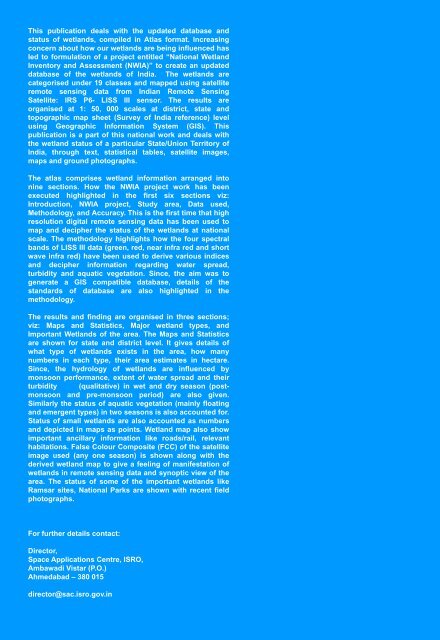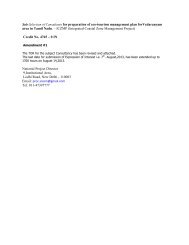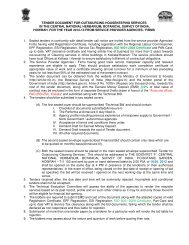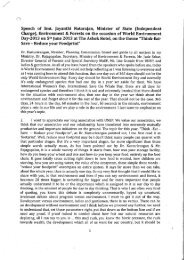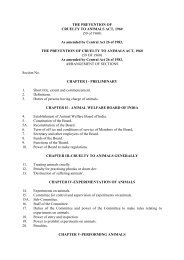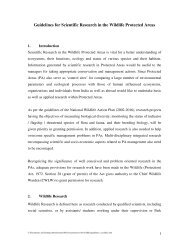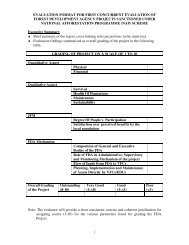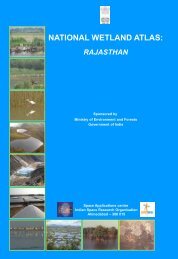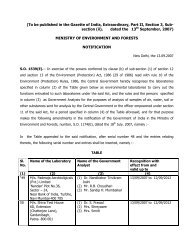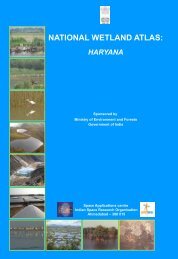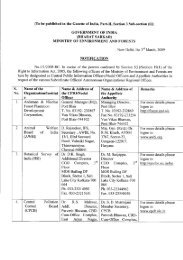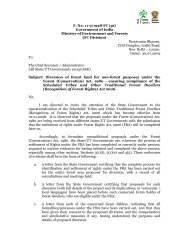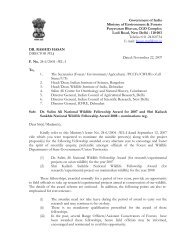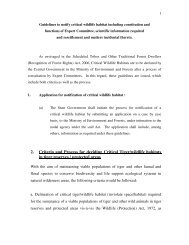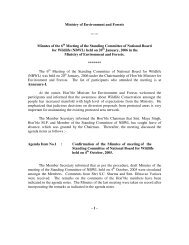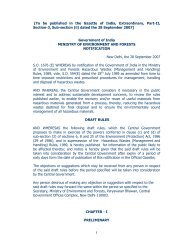Meghalaya - Ministry of Environment and Forests
Meghalaya - Ministry of Environment and Forests
Meghalaya - Ministry of Environment and Forests
- No tags were found...
You also want an ePaper? Increase the reach of your titles
YUMPU automatically turns print PDFs into web optimized ePapers that Google loves.
This publication deals with the updated database <strong>and</strong>status <strong>of</strong> wetl<strong>and</strong>s, compiled in Atlas format. Increasingconcern about how our wetl<strong>and</strong>s are being influenced hasled to formulation <strong>of</strong> a project entitled “National Wetl<strong>and</strong>Inventory <strong>and</strong> Assessment (NWIA)” to create an updateddatabase <strong>of</strong> the wetl<strong>and</strong>s <strong>of</strong> India. The wetl<strong>and</strong>s arecategorised under 19 classes <strong>and</strong> mapped using satelliteremote sensing data from Indian Remote SensingSatellite: IRS P6- LISS III sensor. The results areorganised at 1: 50, 000 scales at district, state <strong>and</strong>topographic map sheet (Survey <strong>of</strong> India reference) levelusing Geographic Information System (GIS). Thispublication is a part <strong>of</strong> this national work <strong>and</strong> deals withthe wetl<strong>and</strong> status <strong>of</strong> a particular State/Union Territory <strong>of</strong>India, through text, statistical tables, satellite images,maps <strong>and</strong> ground photographs.The atlas comprises wetl<strong>and</strong> information arranged intonine sections. How the NWIA project work has beenexecuted highlighted in the first six sections viz:Introduction, NWIA project, Study area, Data used,Methodology, <strong>and</strong> Accuracy. This is the first time that highresolution digital remote sensing data has been used tomap <strong>and</strong> decipher the status <strong>of</strong> the wetl<strong>and</strong>s at nationalscale. The methodology highlights how the four spectralb<strong>and</strong>s <strong>of</strong> LISS III data (green, red, near infra red <strong>and</strong> shortwave infra red) have been used to derive various indices<strong>and</strong> decipher information regarding water spread,turbidity <strong>and</strong> aquatic vegetation. Since, the aim was togenerate a GIS compatible database, details <strong>of</strong> thest<strong>and</strong>ards <strong>of</strong> database are also highlighted in themethodology.The results <strong>and</strong> finding are organised in three sections;viz: Maps <strong>and</strong> Statistics, Major wetl<strong>and</strong> types, <strong>and</strong>Important Wetl<strong>and</strong>s <strong>of</strong> the area. The Maps <strong>and</strong> Statisticsare shown for state <strong>and</strong> district level. It gives details <strong>of</strong>what type <strong>of</strong> wetl<strong>and</strong>s exists in the area, how manynumbers in each type, their area estimates in hectare.Since, the hydrology <strong>of</strong> wetl<strong>and</strong>s are influenced bymonsoon performance, extent <strong>of</strong> water spread <strong>and</strong> theirturbidity (qualitative) in wet <strong>and</strong> dry season (postmonsoon<strong>and</strong> pre-monsoon period) are also given.Similarly the status <strong>of</strong> aquatic vegetation (mainly floating<strong>and</strong> emergent types) in two seasons is also accounted for.Status <strong>of</strong> small wetl<strong>and</strong>s are also accounted as numbers<strong>and</strong> depicted in maps as points. Wetl<strong>and</strong> map also showimportant ancillary information like roads/rail, relevanthabitations. False Colour Composite (FCC) <strong>of</strong> the satelliteimage used (any one season) is shown along with thederived wetl<strong>and</strong> map to give a feeling <strong>of</strong> manifestation <strong>of</strong>wetl<strong>and</strong>s in remote sensing data <strong>and</strong> synoptic view <strong>of</strong> thearea. The status <strong>of</strong> some <strong>of</strong> the important wetl<strong>and</strong>s likeRamsar sites, National Parks are shown with recent fieldphotographs.For further details contact:Director,Space Applications Centre, ISRO,Ambawadi Vistar (P.O.)Ahmedabad – 380 015director@sac.isro.gov.in


